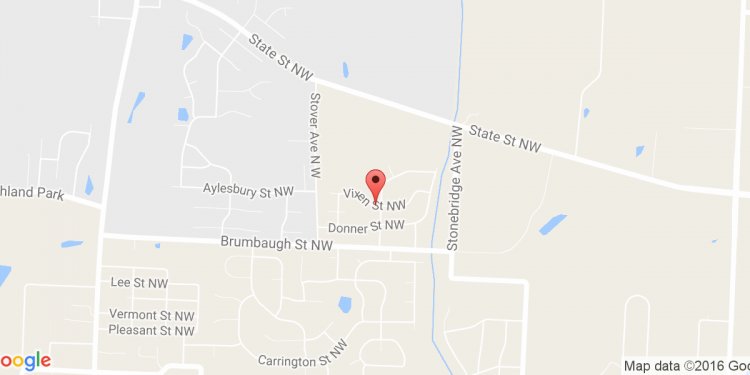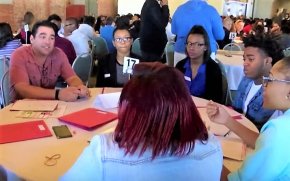
Cleveland Districts
 The Cleveland Metropolitan School District (CMSD) has implemented social and emotional learning (SEL) in every school and seen significant improvements in school and classroom environments as measured in a districtwide survey. In the past five years the district has successfully embedded SEL into everyday learning and activities, impacting every child in the district, their families, and all levels of district staff. The district’s leadership team for SEL, known locally as Humanware, includes the active support of and collaboration with the Cleveland Teachers Union. SEL initiatives also are required by the Cleveland Plan, a law intended to transform education in all city schools. The district’s multifaceted approach focuses on academic achievement strategies, supports for learning, and the engagement of students and families.
The Cleveland Metropolitan School District (CMSD) has implemented social and emotional learning (SEL) in every school and seen significant improvements in school and classroom environments as measured in a districtwide survey. In the past five years the district has successfully embedded SEL into everyday learning and activities, impacting every child in the district, their families, and all levels of district staff. The district’s leadership team for SEL, known locally as Humanware, includes the active support of and collaboration with the Cleveland Teachers Union. SEL initiatives also are required by the Cleveland Plan, a law intended to transform education in all city schools. The district’s multifaceted approach focuses on academic achievement strategies, supports for learning, and the engagement of students and families.
SEL in Cleveland
A Comprehensive approach. Cleveland established its SEL program, “Humanware, ” in 2007 after a student who had been suspended returned to his high school, shot and wounded two teachers and two other students, and then killed himself.
The wide-ranging program includes implementation of the PATHS curriculum in grades PreK-5, the Second Step program in grade 6, student support teams, mental health services in schools, bullying prevention and mediation programs, and a unique intervention called Planning Centers, a constructive alternative to in-school suspensions.
 The Humanware team consists of their Executive Director, three managers, Closing the Achievement Gap (mentors for male students of color), Deans of Engagement (school-level personnel), and two solution specialists. On the larger scale, the SEL focus is supported by a Planning Center instructional aide in every school, anti-bullying and conflict mediation specialists in most schools, deans of engagement in 40 schools, linkage coordinators (student mentors) in nine high schools, and nurses in 48 schools.
The Humanware team consists of their Executive Director, three managers, Closing the Achievement Gap (mentors for male students of color), Deans of Engagement (school-level personnel), and two solution specialists. On the larger scale, the SEL focus is supported by a Planning Center instructional aide in every school, anti-bullying and conflict mediation specialists in most schools, deans of engagement in 40 schools, linkage coordinators (student mentors) in nine high schools, and nurses in 48 schools.
Student advisory committees and community partnerships. Approximately 380 high school students meet quarterly to review their individual school’s Conditions for Learning data, participate in activities with their peers, and provide feedback directly to the CEO about proposed district improvements. This has given students a voice not only at the sessions but in their school communities, where they return to work with the leadership teams. Each school has developed partnerships with local organizations that provide support and resources essential to the improvement of student learning.
Each school has developed partnerships with local organizations that provide support and resources essential to the improvement of student learning.
Professional development. The district has conducted continuous professional development to deepen stakeholder understanding of SEL and build capacity. All ninth-grade seminar teachers (and any other teachers who want help) learn how to run class meetings during summer workshops. Some PreK-8 schools have included class meetings as well. A cadre of district-level trainers in the areas of PATHS and class meetings help increase the likelihood of program sustainability.
Schools that have demonstrated high levels of success in SEL implementation are serving as districtwide SEL model schools. The Humanware team is developing a library of SEL professional development modules for turnaround professional learning.
Curriculum. The district adopted the Promoting Alternative Thinking Strategies (PATHS) curriculum in all elementary schools and trained teachers on its implementation in all PreK-5 classrooms. With the advent of school-based budget autonomy in 2014, school leadership teams can now choose to continue to implement PATHS and/or any other evidence-based program in grades K-5. Second Step, an evidence-based SEL program, is now available for students in grades 6-8. The program will be made available to grades 7-8 during the 2016-17 school year.
Second Step, an evidence-based SEL program, is now available for students in grades 6-8. The program will be made available to grades 7-8 during the 2016-17 school year.
Teachers also have crafted and vetted lesson plans that align the district’s SEL scope and sequence with the Ohio Common Core State Standards. During the 2016-17 school year the lessons will concentrate on high school SEL enhancement.
Results
- The Conditions for Learning data, reported by students three times a year, has steadily improved since 2007 in all three grade bands (2-4, 5-8, 9-12).
- In the fall of 2015, for grades 2-4 districtwide, SEL earned the highest satisfaction ratings — more than 90% in 32 schools.
- For grades 5-8, in the fall of 2015, nine schools showed double-digit growth with SEL from fall to fall. Overall, 36 schools showed positive fall-to-fall growth.
- For grades 9-12, in fall of 2015, SEL recorded the highest growth from the previous year — 4%. Twenty-three of 31 schools showed positive growth, with double-digit growth in five of them.
- The winter 2016 administration of the survey showed districtwide gains on all four scales. High school SEL improved by five percentage points.

















